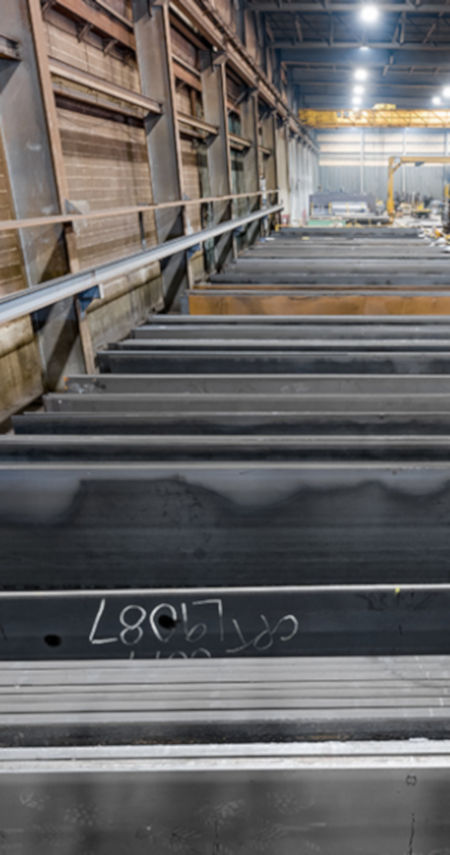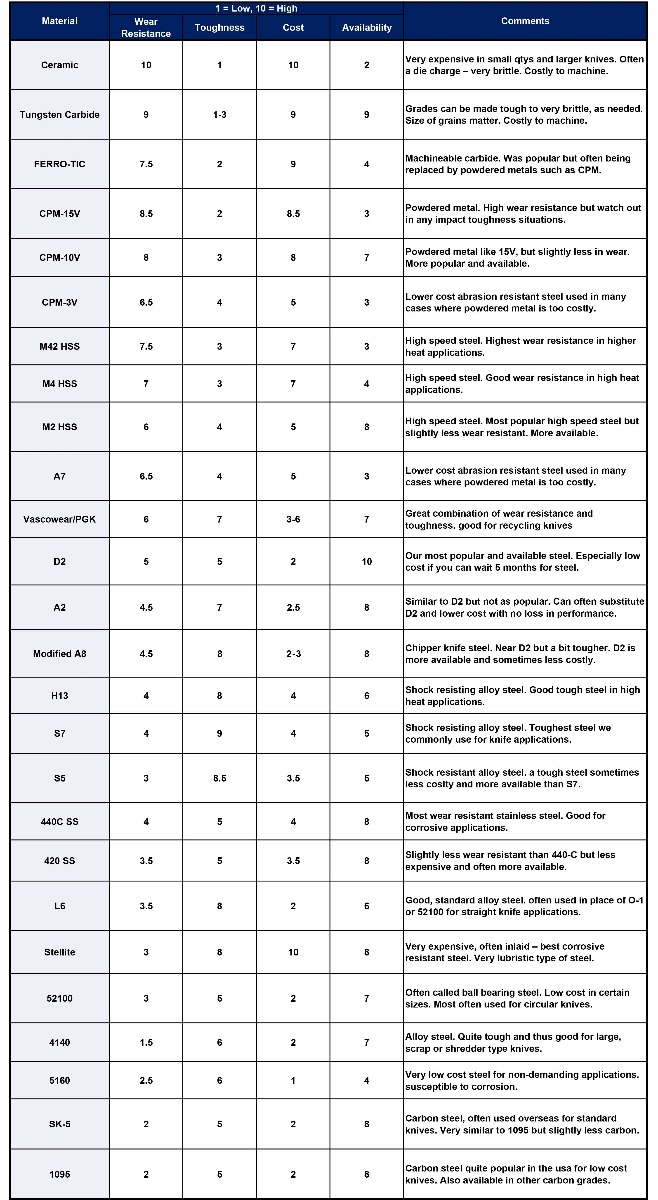Steel Options for Industrial Knives

Material selection is a critical decision with any knife. All materials have slightly different characteristics that we take into account when suggesting a material to our customers. Some are quite obvious, such as toughness and wear resistance, but others might not be so apparent. Plus we have to decide how changing one characteristic affects the other characteristics that are important. Here is a list of all we consider:
Wear Resistance
What type of wear? A sliding wear or a more direct type of erosion? Many times corrosion looks like erosion, to the untrained eye.
Toughness
Does the knife need flexibility or the ability to “give”? Is impact toughness needed? Is there any side-loading?
Hardness
Does a higher hardness cause a potential problem when running against another part that is also hardened? Which one is less expensive or easiest to change and thus should be the “sacrificial lamb”?
Corrosion
What environment is the knife operating in? Is it a food application? Is some surface rust allowed? How long is the knife expected to run? Some knives are changed well before any corrosion has time to occur.
Availability
Sometimes a certain material may be optimum for an application but is so difficult to acquire that we will avoid it.
Cost
Is the cost per machine hour such that it is worthwhile to spend more money on expensive material that will last longer? How long does it take to change the knives?
Machinability
What are the special features of the knife that will be difficult to machine and thus raise the costs of certain materials?
Quality of Cut
How important is the quality of cut? Is a knife material needed that will allow for ultra-sharp edges?
With 50 years of knife manufacturing experience, we are experts at helping you choose the best performing material for your knives. We invite you to talk to one of our Sales Engineers about your application!If you don’t see what you need or have additional questions then simply contact us, email us, or call us at 888-543-6860 and we can provide you proper guidance.
The chart below lists most of our more popular raw materials along with how they compare with each other in terms of: Wear Resistance, Toughness, Cost and Availability. We have made products out of many different materials not listed including Copper, Diamond, Sapphire, and Aluminum.


